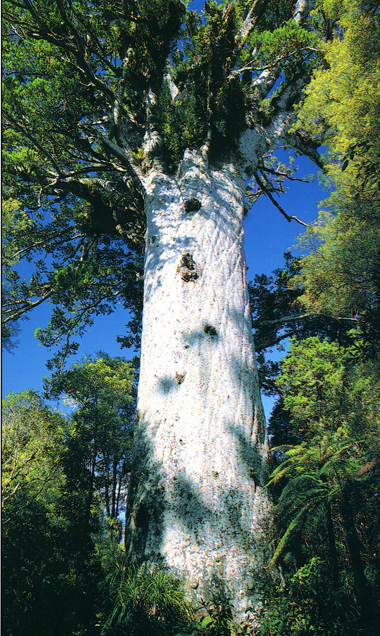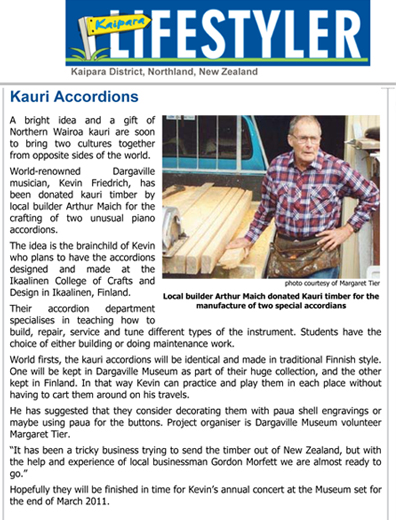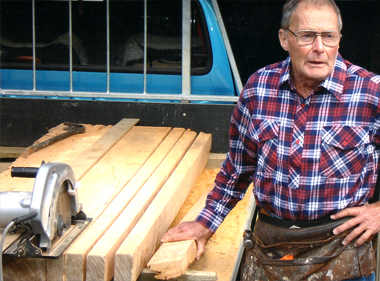|
|
|
|

As
part of an International venture between New Zealand and Finland,
a local craftsman in Finland, will construct the world's first
accordions made from the prized native New Zealand 'Kauri' tree.
The dream of Kevin Friedrich, born in Dargaville, New Zealand
(near where the giant Kauri trees grow), is a regular visitor
to Ikaalinen, Finland, the home to a rare accordion making school,
where trainees are taught the art of constructing accordions
in the traditional Finnish folk style. The only school of its
kind in Finland, the program is headed by master craftsman Jarkko
Helin. Based in Tampere, Finland, Jarkko makes approximately
10 - 15 instruments per year, all custom designed for the artists,
and will be in charge of making the Kauri Accordions for this
special project.
Now that the Kauri wood is in place, it is estimated that the
instruments will be ready in the first part of 2012. Here you
will find some preliminary information about this exciting project
thus far.
It is planned that the Finnish Kauri Instrument will be premiered
at the 40th Anniversary Sata-Häme Soi Festival l to be
held in the summer of 2012.
|
 Kauri
at a Glance Kauri
at a Glance
The Kauri tree, Agathis australis, is New Zealand's largest
and most famous native tree.
Kauri were prolific in the past
Kauri are among the world's mightiest trees, growing to more
than 50 metres tall, with trunk girths of up to 16 metres and
living for more than 2000 years. Kauri forests once covered
1.2 million of the Northland area of New Zealand, and were common
when the first people arrived in New Zealand some 1000 years
ago.
Past uses of Kauri
The Maori people used kauri timber for boat building, carving
and building houses. The gum was used as a fire starter and
for chewing (after it had been soaked in water and mixed with
the milk of the Puha plant).
Kauri Forest
The arrival of European settlers in the 17-1800's saw the decimation
of these magnificent forests. Sailors quickly realised the trunks
of young kauri were ideal for ships' masts and spars, and the
settlers who followed felled the mature trees to yield huge
quantities of timber of unsurpassed quality for building.
The gum too, became essential in the manufacture of varnishes
and other resin-based products. The gum was obtained through
digging, fossicking in treetops, or more drastically, by bleeding
live trees. More forest was cleared as demand for farmland and
timber increased in the early and mid 20th century.
Saved from destruction
The Waipoua forest near Dargaville in Northland were at first
saved from destruction by
their remoteness. The land was purchased by the Crown in 1876,
but for decades there was debate over what should be done with
the forest. Public pressure for total protection increased after
the turn of the century and now Kauri trees are a protected
speices.
 The
Largest Kauri Tree The
Largest Kauri Tree
The most famous and largest Kauri tree is Tane Mahuta, which
is Maori for "Lord of the Forest." Located in the
Waipoua Forest near Dargaville, Tane Mahuta is the largest kauri
tree on record, with a 2001 measurement of 148 feet in height
and a crown width of 114 feet.
The Oldest Kauri Tree
The oldest living kauri tree is located in the Waipoua Forest
and is called Te Matua Ngahere, or "Father of the Forest."
The tree is about 3,000 years old.
Since
they are protected by law, most of the Kauri timber used today
is found buried under ancient swamps and dates back tens of
thousands of years. It is not uncommon to find 30-50,000 year
old Kauri logs underground, and they serve as a reminder of
the fast tracts of rainforest which once blanketed the North.
Some swamp Kauri of this vintage has been brought to the surface
with its leaves and cones still green, supporting the theory
that these great forests were sheared off rapidly at ground
level by advancing ice sheets. Other Kauri is recycled from
houses, buildings and furniture that were constructed from
Kauri around the turn of last century.
Working
in collaboration with the Accordion Making Department of the
Handi-Craft School in Ikaalinen, some of this precious wood
was recently shipped to Finland, the instruments made from
this ancient timber will be the first accordions ever made
from Kauri.
|
 |
 |
|
Above
left: Dargaville builder Arthur Miach who donated the
precious wood
Above right: Gordon Morfett who helped prepare the wood
for shipping to Finland
|
|
|
|
the
Kauri arriving in snowy and cold Ikaalinen, Finland
pictured is Kimmo Mattila, President of the Finnish
Accordion Association
|
|
|
|
After
about 6 weeks, the wood arrived from New Zealand via
Hamburg, Germany before reaching Finland
|
 |
|
Kimmo
Mattila inspecting the wood as it is unpacked in Ikaalinen
|
 |
|
Kevin
Friedrich presenting a poster of the oldest living Kauri
Tree 'Te Matua Ngahere' (Father of the Forest) to Jarkko
Helin.
The poster shows a timeline of world history during
this trees amazing 3,000 year lifespan thus far.
Jarrko is the craftsman who will build the instruments,
the world's first Kauri accordions
|
 |
|
During
the Festival, Jarrko had some of the Kauri wood on display
in the Accordion Fair Trade Show. The wood created much
interest among visitors and fellow exhibitors, who marveled
at its beautiful blond color and texture. Kevin is pictured
with a Finnish Folk Instrument similar to how the Kauri
accordions will look once finished.
|
 |
 |
|
Above
left: An instrument similar in design to the Kauri Accordions
Above right: Jarkko demonstrating the Finnish Folk Accordion
|
|
|
 |
|
|
|
|
